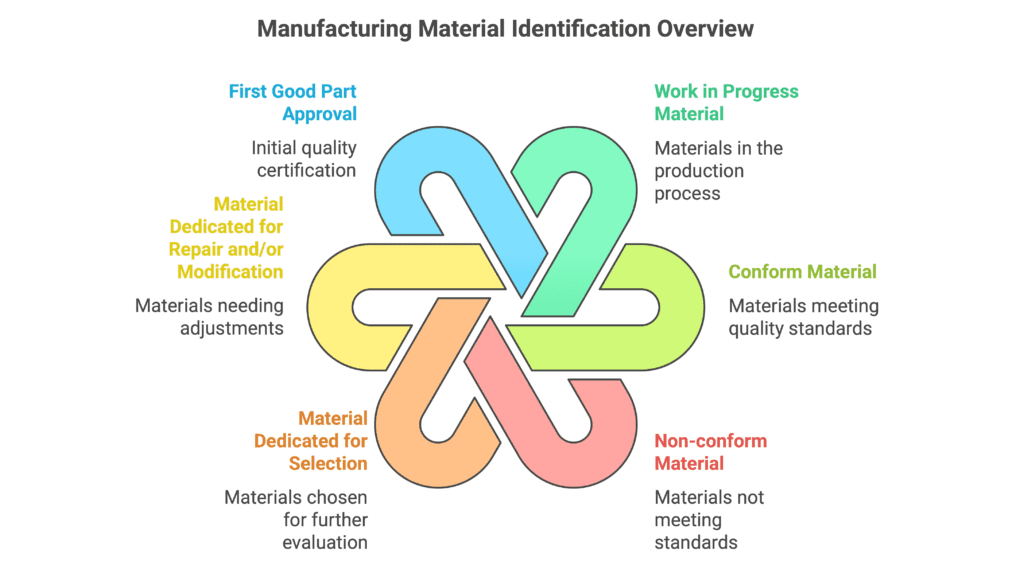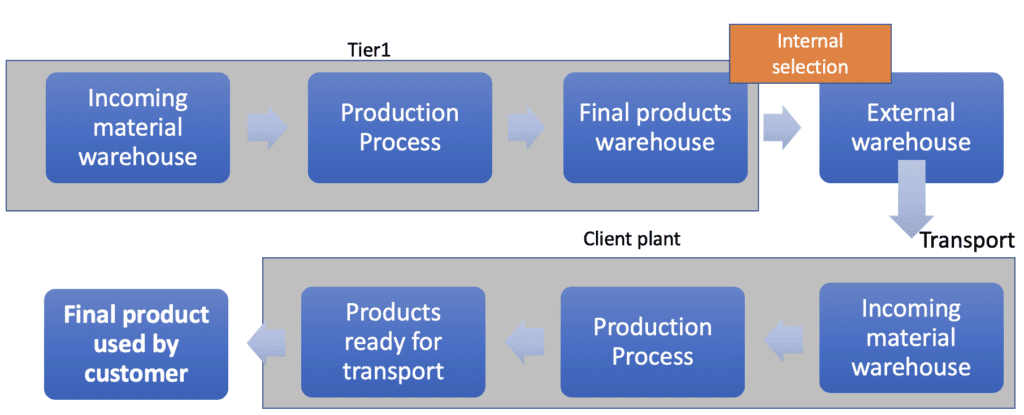Identification and traceability are crucial terms in managing the status of manufactured parts. They play an essential role in quality problem analysis, helping to reduce the suspected population of parts both within an organization and at the customer’s plant, thereby cutting costs.
Identification: Show what you’ve got
Identification refers to the status of any component in production, defining its purpose. It’s vital to ensure no components on the production line have an undefined status. If auditors find an undefined status during a client process audit, it can lead to additional escalation, such as non-compliance with IATF requirement 9.1.2.1.
This issue may also arise during audits by certification bodies or internal Layered Process Audits (LPA).
Identification Status Types
Understanding the types of identification implemented in the manufacturing plant is important. These include:
- Work in Progress Material. Nest production often involves for example stamping parts and then transporting them for welding.
- Conform Material
- Non-conform Material: Typically stored in red containers and transported to the scrap isolator.
- Material Dedicated for Selection: Applied when identifying a non-conforming product during production, initiating selection from the finished products warehouse through production to components “at the entrance.”
- Material Dedicated for Repair and/or Modification
- First Good Part Approval: Certification of process parameters and production parts by the quality department.
- Material Dedicated for Tests: Used to validate changes to the product during current production.

Traceability: A key element of risk analysis for suspected components
Traceability is crucial in defining potentially affected populations. Depending on the risk assigned to the manufactured product and customer requirements, traceability may include:
- Information on the production cell where the component was produced.
- Operator number.
- Production date, from hour to shift date.
- Machine identification used for production. For instance, knowing which machine produced the part can help in interim containment actions (ICA) and shipment with smaller production capacity if only one machine is affected.
- Identification of sub-components included in the final product.

As illustrated, identification and traceability are distinct yet interconnected. You can find additional requirements in IATF 8.5.2.1.
Key areas to check during Identification and Traceability implementation
When assessed by a customer or certification body auditor, or during presence on the production line, ensure no components lack traceability. For example, during supplier audits, checking leaders’ cabinets for small-size components and spaces behind machines can reveal old, untraceable components.
Removing these from production and analyzing the situation can prevent future complaints.
Identification and traceability are fundamental in managing and maintaining the quality of manufactured parts, ensuring efficiency, and reducing costs.
Dariusz Kowalczyk


